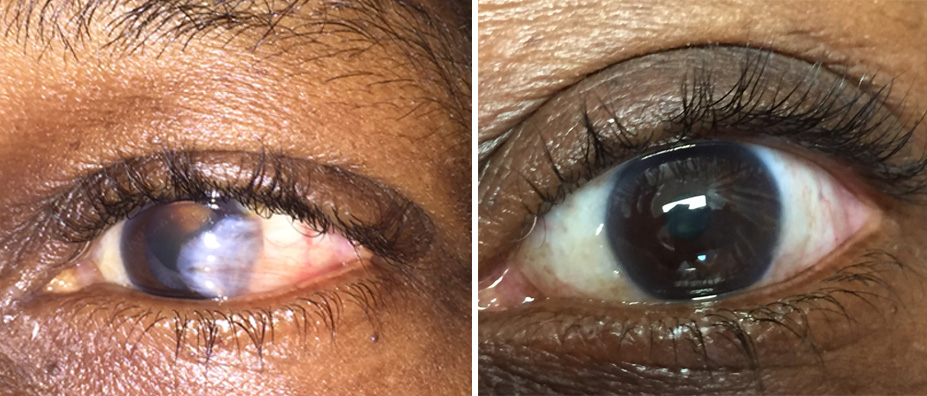Pterygia and pingueculae generally don’t require treatment until symptoms are severe enough.
If these growths become large enough to threaten sight or cause persistent discomfort, they can be removed surgically in an outpatient procedure.
A topical anesthetic is used before surgery to numb the eye’s surface. Your eyelids will be kept open while the pterygium is surgically removed. After the procedure, which usually lasts approximately 20-25 minutes, you likely will need to wear an eye patch for protection for a day. You should be able to return to work or normal activities the next day. After removal of the pterygium, antibiotic and steroid eye drops will be prescribed to use for several weeks to decrease swelling and prevent regrowth.
To prevent regrowth after surgery, Dr. Inna Ozerov will glue a piece of surface eye tissue onto the affected area. This method, called autologous conjunctival autografting, and has a low recurrence rate. Medications that prevent tissue growth are sometimes used to help prevent recurrences of pinguecula or pterygium.
The best way to avoid recurrence of pinguecula or pterygium after treatment is to limit exposure to the environmental factors that contribute to their growth. Adequately protect your eyes from excessive UV light with proper, wraparound sunglasses. Protect your eyes in dry, dusty conditions with proper eyewear. Apply artificial tears to your eyes in dry conditions.

beforeafter



